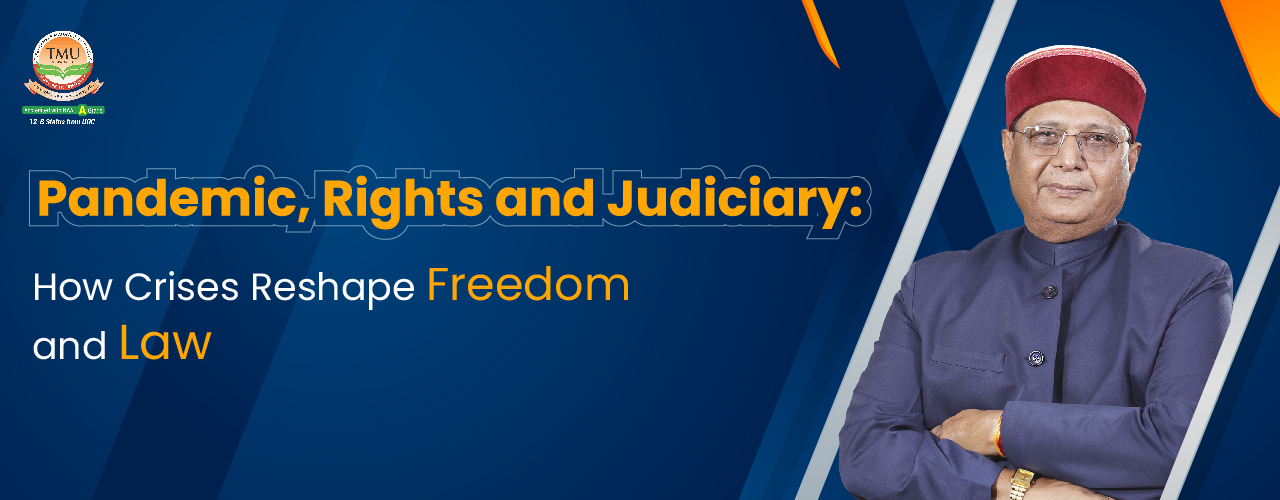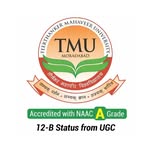From Emergency to Evolution: How Pandemics Redefine Rights and Judiciary
Table of Contents
by Prof. Harbansh Dixit
History is not only shaped by wars and revolutions, but also by pandemics and economic downturns. The London Plague of 1665 and the Great Depression of the 1930s changed the trajectory of global governance, economy, and legal thinking.
- Britain, once the most powerful empire, saw social and legal norms shift post-pandemic.
- The economic collapse of the 1930s led to state intervention in markets and curbed liberties across democracies.
- Even U.S. Supreme Court justices expressed concern over expanding executive control during crises.
Liberty in Proportion to Social Stability
No freedom is socially neutral. The more orderly and safe a society, the more room for freedom. During crises, especially health emergencies, liberty is restricted in proportion to the public threat.
COVID-19 formed a dangerous alliance of health risk and state surveillance, forcing nations to recalibrate freedoms.
How Article 21 Was Temporarily Curtailed
Under Article 21 of the Indian Constitution, every citizen has the right to life and personal liberty. However:
- Quarantine, forced testing, and isolation happened without judicial warrants.
- Rights to movement, attire, and assembly were curtailed under public health concerns.
- Temporary suspension of religious gatherings challenged Article 25 (freedom of religion).
This pandemic demonstrated that constitutional liberties are not absolute but situationally negotiable.
Teerthanker Mahaveer University
Apply for Admission
Click Here To Apply for Admission
The Right to Privacy Under Threat
The most significant casualty of COVID-19 was the right to privacy.
- Public health surveillance demanded mass tracking and biometric updates.
- Contact tracing, vaccine passports, and quarantine surveillance were normalized.
- Citizens had to sacrifice privacy for collective safety.
The right to privacy is no longer only a legal issue—it is a technological and ethical dilemma.
Judiciary’s Technological Transformation
The crisis forced judicial reforms unseen in recent history:
- Traditional courts shifted to video conferencing and virtual hearings.
- Supreme Court relaxed its dress code to reduce risk.
- Legal culture had to evolve to support remote arguments and digital evidence presentation.
Remote Justice: The New Normal?
- Arguments had to be delivered digitally and effectively.
- Judges, lawyers, and litigants required training in technology.
- The public also needed legal awareness to engage meaningfully in remote justice.
India faces an urgent need to institutionalize virtual courts with proper infrastructure and legislative clarity.
Legal Foundations: Emergency Laws Backing Restrictions
The restrictions on rights weren’t arbitrary:
- They were enforced under The Epidemic Diseases Act, 1897, and the Disaster Management Act, 2005.
- These laws empowered states to formulate temporary, legally binding protocols.
- Clear legal frameworks reduce misuse of power and increase accountability.
National Resolve in Crisis
History shows that nations rise stronger from crises:
- Britain emerged as a global empire post-plague.
- America rebounded from the Depression with new economic models.
- India’s resilience lies in its people’s will and constitutional faith.
This is a decisive moment. Not just for public health, but for redefining the balance between liberty, governance, and law.















